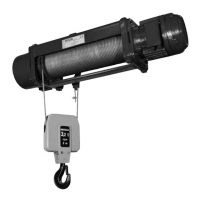Why is my misia Chain Hoists motor overheating?
- Ddevin56Aug 18, 2025
Motor overheating in misia Chain Hoists can occur due to several reasons: * Voltage fluctuations exceeding ± 10%. * Insufficient cooling air, potentially due to clogged air passages. * Ambient temperatures higher than the operational design. * Operating the equipment outside its intended duty cycle. To resolve this, ensure a stable power voltage supply, restore proper air circulation, adjust environmental conditions, or adapt the motor's operational features.

